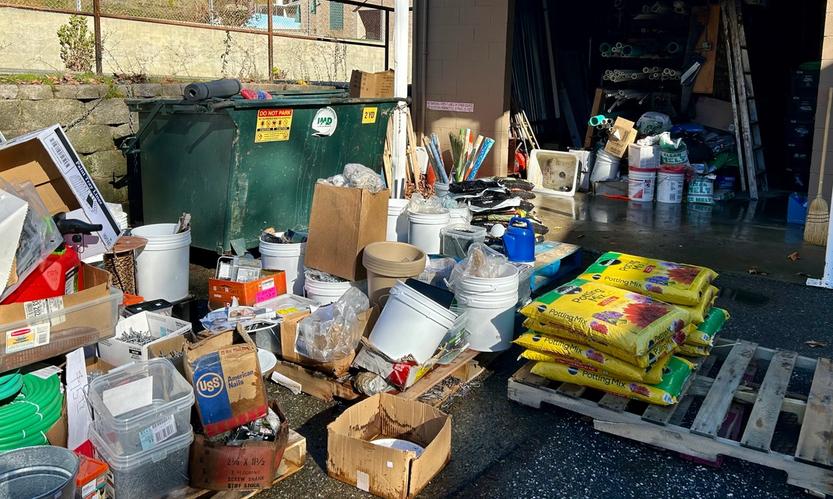FERC Issues Final Environmental Impact Statement for Removal of Dams on Klamath River
September 1, 2022
This past Friday, August 26, the Federal Energy Regulatory Commission (FERC), federal agency responsible for regulating hydroelectric dams, issued its final environmental impact statement (EIS) concerning the removal of the dams on the Klamath River with FERC staff recommending the commission approve the Klamath River Renewal Corporation’s application to remove the J.C. Boyle, Copco No. 1, Copco No. 2, and Iron Gate dams from the Klamath River. The final EIS states, “Commission staff finds that any short- and long-term adverse environmental effects and the loss of power generation resulting from the proposed action would be outweighed by the substantial long-term environmental benefits gained from project decommissioning.” In reponse to the news about the EIS, California Department of Fish and Wildlife Director Charlton H. Bonham issued the following statement: “We applaud the Federal Energy Regulatory Commission staff for issuing the final EIS ahead of schedule and for validating license surrender and dam removal as the right thing to do. While we continue to review the document, we welcome this critical milestone and look forward to advancing what will be the largest dam removal project in U.S. history and restoration of 400 miles of the Klamath River for the benefit of salmon, Tribes and communities in the basin. The final EIS along with the Department of the Interior’s recent funding for the Klamath River Basin under the Bipartisan Infrastructure Law and leadership from Oregon and California all point toward now being the time to solve many of the basin’s long-running restoration and water challenges.” In a interview with News@10 posted on August 29, Amy Bowers Cordalis, the legal counsel for the Yurok Tribe, said: "Essentially what they've concluded is: out of all of the alternatives studied, dam removal is the most likely option to prevent extinction of the Klamath River salmon." Earlier this year, Glen Spain of the Pacific Coast Federation of Fisherman's Associations, was quoted in a press release issued by Yurok Tribe, stating, “Dams have decimated salmon returns on the Klamath River which means fewer harvest opportunities for family-owned commercial fishing vessels. Dam removal has the potential to save our industry and thousands of jobs in California and Oregon ports" because "The dams are a key factor in the diseases [the Ceratomyxa shasta parasite thrives when water temperatures are high and water flow is low] that are wiping out entire generations of salmon." Earlier this year, Mark Bransom, CEO of the nonprofit Klamath River Renewal Corp. (KRRC) organized to oversee the removal of four out of the seven dams now present on the upper Klamath, said dam removal could begin in 2023 and conclude as early as 2024. Restoration efforts — returning the river’s free flow from southern Oregon to Northern California and then the Pacific Ocean — will require several additional years.removal would begin early next year. As for the Yuba River, Englebright Reservoir, Bullards Bar hydroelectric dam, and Daguerre Point Dam—are currently going through the FERC relicensing process, offering the opportunity for reintroduction of salmon and steelhead into their historic habitat in the upper Yuba basin. For the foreseeable future, however, "reintroduction" may only take the form of a “trap and transport” program circumventing the 260-foot Englebright Dam to reach the abundance of quality fish habitat found on the Yuba’s North Fork. The Iron Gate Dam, powerhouse and spillway are on the lower Klamath River near Hornbrook, California; one of four dams on the Klamath
The Iron Gate Dam, powerhouse and spillway are on the lower Klamath River near Hornbrook, California; one of four dams on the Klamath
Featured Articles

Sierra Hardware Plans Extensive Repairs After Flood Damage →
December 8, 2025
Sierra Hardware faces extensive repairs after Thanksgiving flood damages store flooring and drywall.
Sheriff’s Office Accepts $60,000 Grant for New Search and Rescue Team →
December 2, 2025
Confusion Surrounds Release of the Plumas County Grand Jury’s Report →
December 4, 2025
WCB Considers Grant for Sierra Valley Tribal Land Purchase →
Updated November 22, 2025
Downieville Fire Auxiliary Hosts Annual “Holiday on Main” Event Saturday →
December 2, 2025
